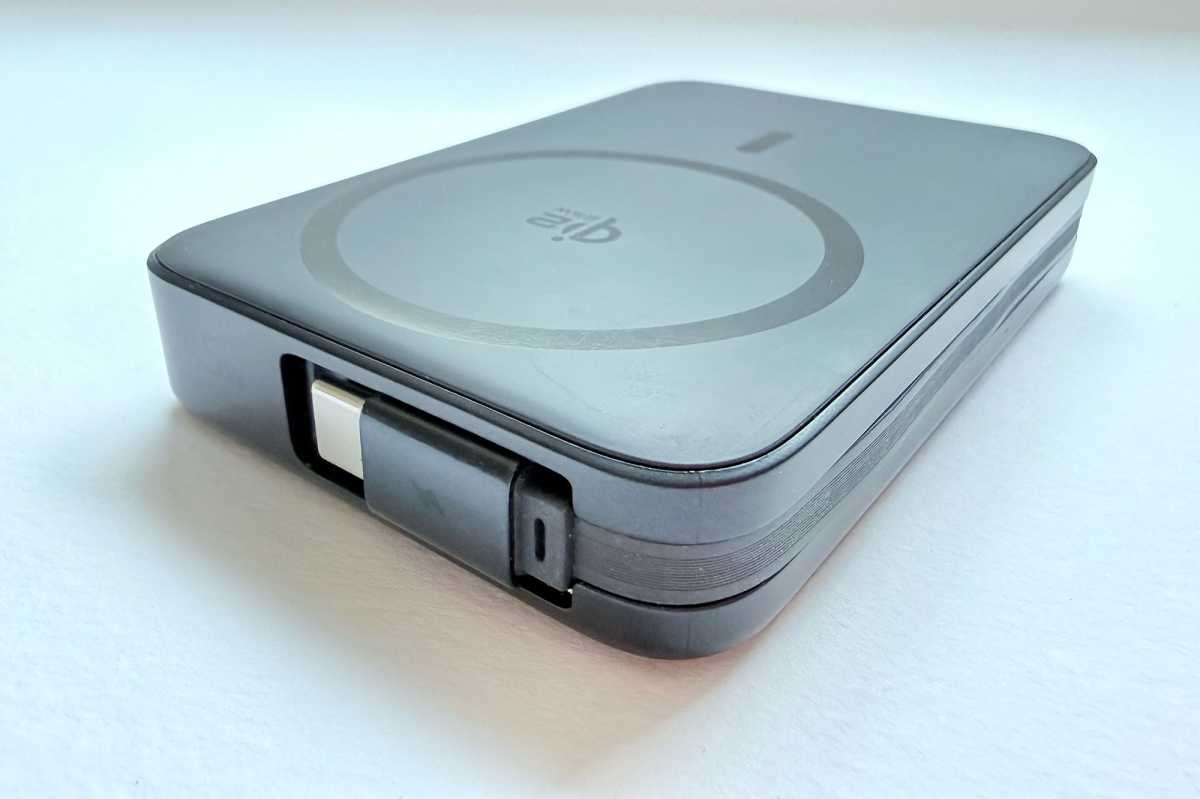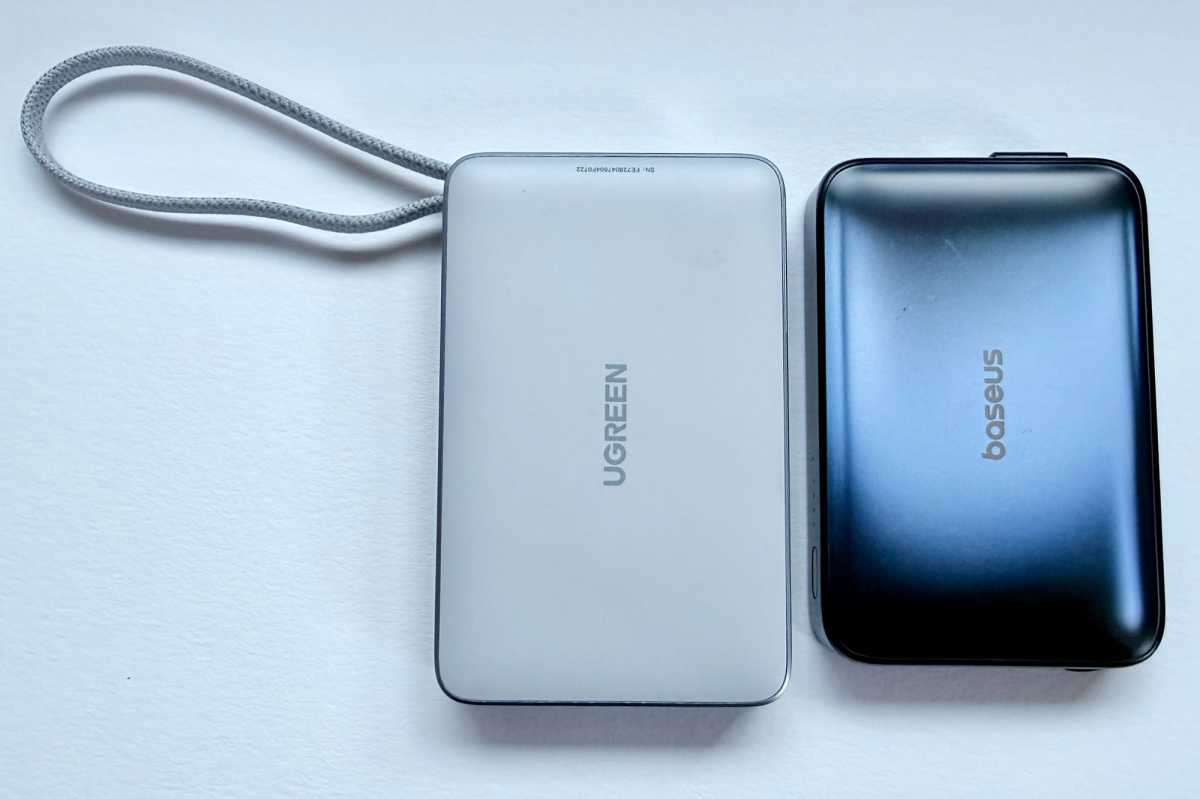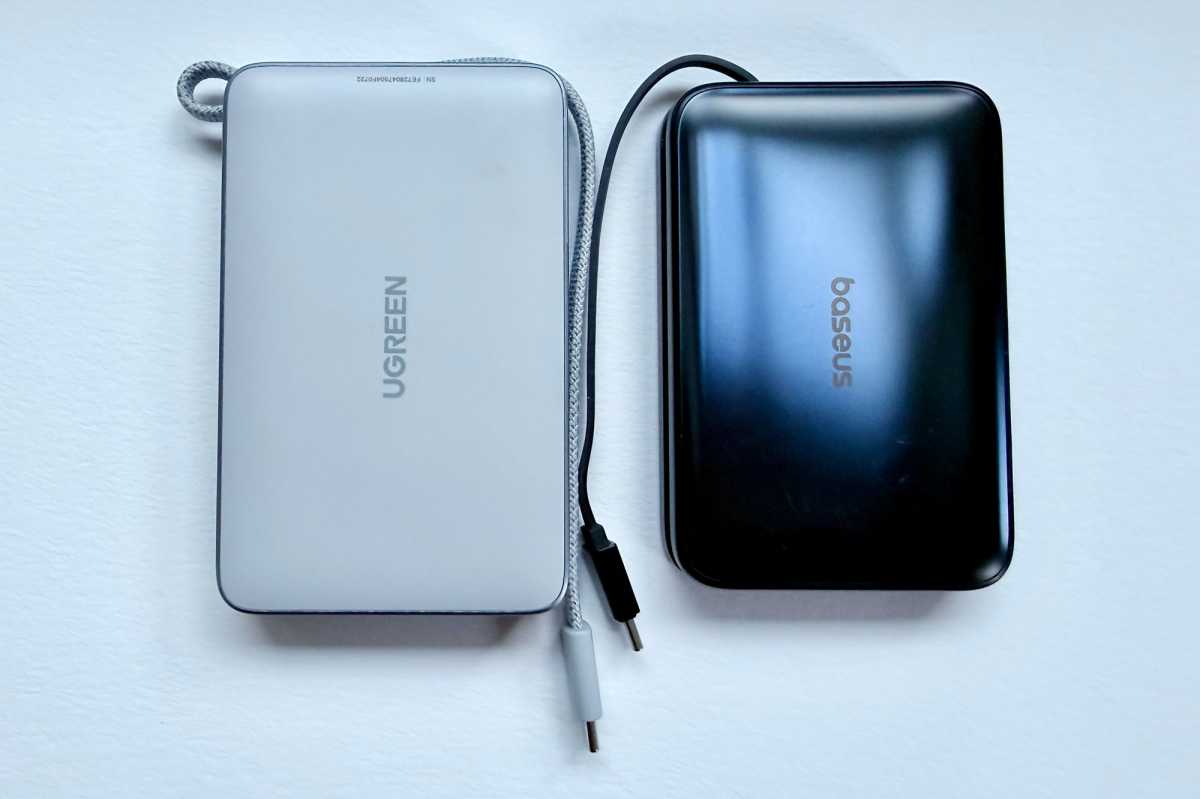Baseus PicoGo 10000mAh Magnetic Power Bank (AM61) review: fastest available for wireless and wired speeds
Description

At a glance
Expert's Rating
Pros
- Super-fast 25W wireless charging
- Super-fast 45W wired charging
- 10K battery pack
- Built-in USB-C cable
Cons
- Slower input speed
Our Verdict
This compact next-gen magnetic power bank is a winner on 25W wireless charging speed and boasts a built-in 45W USB-C cable plus spare 45W USB-C port.
Price When Reviewed
This value will show the geolocated pricing text for product undefined
Best Pricing Today
Best Prices Today: Baseus Picogo 25W Wireless 10000mAh Power Bank (AM61)
Product
Price
Price comparison from Backmarket
25W wireless charging is here and Macworld Labs is testing them as fast as they reach us.
The newest generation of wireless charging products is ramping up the product launches, following our tests of the Belkin UltraCharge Pro 3-in-1 Charging Station and Ugreen MagFlow Magnetic Power Bank we are now looking at Baseus’s offering.
Qi2 25W brings wireless charging close to wired-charging speeds, as magnetic placement improves and thermal cooling keeps the devices charging despite the heat-inducing higher power output.
The first 25W portable magnetic wireless battery pack we tested was the Ugreen MagFlow 10000mAh Power Bank, and it lived up to expectations by knocking around 12 minutes off the time to recharge an iPhone from 0% to 50%.
Hot on its tail in the Macworld Labs is the Baseus PicoGo 10000mAh Power Bank (AM61), which matched that charging speed to the minute.
That’s a 32-minute 0-50% charge compared to the 45 minutes we see from 15W MagSafe and Qi2 15W chargers. Note that fast charging only really occurs in the first stages of charging a device; as a safety measure charging slows down the closer the device gets to being fully recharged. That’s why we test to 50% to show the benefit of faster charging speeds.
Only the iPhone 16 and 17 families can reach 25W recharging and these must be running at least iOS 26. Older phones can still use the new 25W chargers, but the power is limited to 15W so charges are slower.
 <button class="lightbox-trigger" type="button">
<button class="lightbox-trigger" type="button"><svg fill="none" height="12" viewBox="0 0 12 12" width="12" xmlns="http://www.w3.org/2000/svg">
<path d="M2 0a2 2 0 0 0-2 2v2h1.5V2a.5.5 0 0 1 .5-.5h2V0H2Zm2 10.5H2a.5.5 0 0 1-.5-.5V8H0v2a2 2 0 0 0 2 2h2v-1.5ZM8 12v-1.5h2a.5.5 0 0 0 .5-.5V8H12v2a2 2 0 0 1-2 2H8Zm2-12a2 2 0 0 1 2 2v2h-1.5V2a.5.5 0 0 0-.5-.5H8V0h2Z" fill="#fff"></path>
</svg>
</button></figure>
Simon Jary
Baseus’s PicoGo wireless charging speed matches that of the Ugreen MagFlow but it is supreme on wired charging with a built-in 45W USB-C cable and a spare 45W USB-C port. The Ugreen’s 30W USB-C cable and port should be pretty much all you need for charging an iPhone but that extra 15W might make a little difference for larger iPhones. 45W is the high point for Samsung’ phones’s Super Fast Charger 2.0 standard, which is why it’s included here.
45W charging offers enough power to keep even a MacBook Air working, although that 10000mAh battery will probably only top it up to about 40%. For more adept laptop chargers see our roundup of the best MacBook power banks.
Performance
Aside from the speedy charging, we test how many times each power bank can top up a fading iPhone.
The Baseus PicoGo recharged our test iPhone 16 Pro from 0% to 100% and then again to 67% on the second go when the iPhone’s battery had run down again.
While that is not as strong a recharging performance as found by power banks such as the Anker Zolo 10K (191%), EcoFlow Rapid 10K (190%) and Anker MagGo 10K Slim (188%) it is superior to the 144% score of the 25W Ugreen MagFlow.
Remember that the Rapid and MagGo are 15W chargers and the Zolo only 7.5W.
 <button class="lightbox-trigger" type="button">
<button class="lightbox-trigger" type="button"><svg fill="none" height="12" viewBox="0 0 12 12" width="12" xmlns="http://www.w3.org/2000/svg">
<path d="M2 0a2 2 0 0 0-2 2v2h1.5V2a.5.5 0 0 1 .5-.5h2V0H2Zm2 10.5H2a.5.5 0 0 1-.5-.5V8H0v2a2 2 0 0 0 2 2h2v-1.5ZM8 12v-1.5h2a.5.5 0 0 0 .5-.5V8H12v2a2 2 0 0 1-2 2H8Zm2-12a2 2 0 0 1 2 2v2h-1.5V2a.5.5 0 0 0-.5-.5H8V0h2Z" fill="#fff"></path>
</svg>
</button><figcaption class="wp-element-caption">The Baseus PicoGo is noticeably smaller than the 25W Ugreen MagFlow.</figcaption></figure>
Simon Jary
Design
The Baseus PicoGo 10K measures 4.1 x 2.7 x 0.75 inches (10.4 x 6.8 x 1.9cm) and weighs 7.44oz (211g). That’s about average for a 10K power bank—a little smaller than the EcoFlow, lighter than the Zolo but deeper than the MagGo Slim.
Compared to its 25W rival Ugreen MagFlow, it is visibly smaller and 40g lighter.
 <button class="lightbox-trigger" type="button">
<button class="lightbox-trigger" type="button"><svg fill="none" height="12" viewBox="0 0 12 12" width="12" xmlns="http://www.w3.org/2000/svg">
<path d="M2 0a2 2 0 0 0-2 2v2h1.5V2a.5.5 0 0 1 .5-.5h2V0H2Zm2 10.5H2a.5.5 0 0 1-.5-.5V8H0v2a2 2 0 0 0 2 2h2v-1.5ZM8 12v-1.5h2a.5.5 0 0 0 .5-.5V8H12v2a2 2 0 0 1-2 2H8Zm2-12a2 2 0 0 1 2 2v2h-1.5V2a.5.5 0 0 0-.






